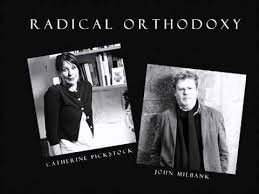This past summer there was a brief flaring of concern about rainforest destruction in the Brazilian Amazon. Panicked headlines portrayed the whole region as on fire, the President of France took the President of Brazil to task, and ‘the lungs of the planet” were said to be risk. Brazil’s Foreign Minister responded by saying that the number of fires were not above average. This was presumably meant as reassurance, as well as defiance, It was, in fact, a tricky claim - there had been past years when there were even more fires, though the number in 2019 was double the number of the year before - but, even if it had been true, it would not have been that reassuring. The Brazilian rainforest has been on fire for a long time, as I think the following series will make clear.
For two years in the mid-1960’s I lived near the little town of Sibu in the Malaysian state of Sarawak on the island of Borneo, a vast region of tropical rainforest. By the later 1980’s I was hearing, again and again, of a logging boom there. Not only were valuable tropical hardwoods being sold so cheap that they ended up in shipping pallets and other similarly wasteful uses, but forest peoples were losing their homes and livelihoods. Similar stories were coming from Brazil and elsewhere. I began to investigate, and the result was this five-hour effort, broadcast in 1989. It gathered stories from Sarawak and Brazil - but also from Canada where acid rain was believed responsible for the declining health of maple forests. - and it reflected on forest ecology and forest conservation through the world.
Thirty years later, it remains germane, although many details may be out-of-date. It also contains a number of inspiring accounts of resistance from around the world. One caution concerns the conclusion of the fifth and final program in the series that maple decline in Canada was a direct result of acid rain. New scientific evidence, presented in the year after these broadcast, suggested that damage to roots sustained during an unusually harsh winter in the later 1970’s was also playing a key role in maple decline. This theory received some confirmation, when the maple bush began to recover out of proportion with any declines in acid rain. This demonstration that scientific theories are always, more or less, provisional became a lasting lesson to me and seems relevant at a time when the expression “settled science” has become something of an ideological cudgel.
A transcript of the series is available on the transcripts page of this site. The lineo-up of speakers was as follows:
#1 - José Lutzenberger, Barbara Zimmerman, Tom Lovejoy, Kenton Miller, Adrian Forsyth, Richard Evans Schultes, Susanna Hecht, Dan Janzen
#2 - Job Dudley Tausinga, Theodore Panayotou, Bruno Manser, Mat Sylvan, Martin Khor, Randy Hayes, Peggy Hallward, John Seed, Neville Wren, Martin Teni
#3 - Simon Dick, Catherine Howard, Susanna Hecht, Peggy Hallward, Darrell Posey, Guujaw
#4 - Steve Schwartzman, Susanna Hecht, Robert Kasten, Ted Macdonald, Gary Hartshorn, Theodore Panayotou, Bill Burch, Kenton Miller
#5 - Michael Herman, Arch Jones, Dick Klein, Dale Willows, Tom Hutchinson, Robert Bruck, Bernard Ulrich, Don Goltz, Ian MacLachlan





